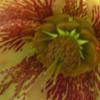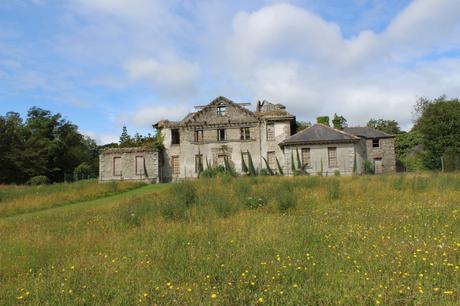
Back to my trip to Ireland, day 4 saw us arrive at Kilmacurragh, Kilbride, Co Wicklow. I have skipped ahead a little as I wanted to show you something other than private gardens.
Kilmacurragh is the outpost for the Dublin Botanic Garden, just as Kew has Wakehurst Place. It allows the botanic garden to grow plants it doesn’t have the right environment for in Dublin. The garden was one of the most important private gardens in Ireland due to the extensive plant collections made by its owners, the Acton family, from the 1750s to the First World War. However, like many family estates at this time it suffered from the deaths of three heirs in quick succession and large inheritance tax payments. Eventually the property was bought by the National Botanic Gardens in 1996 and in 2006 the redevelopment of the garden, led by Head Gardener, Seamus O’Brien, started. The gardens, and those in Dublin, have benefitted from a positive approach by the Irish government and have been lucky in receiving significant levels of funding in recent years; a pity this approach is not matched elsewhere.
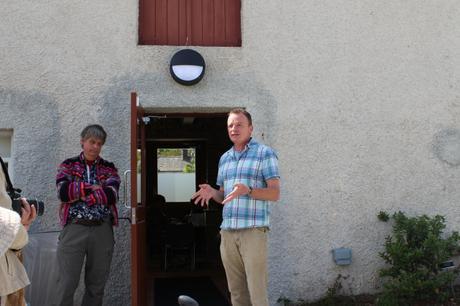
As with most of the other gardens we visited we had the benefit of being shown around by Seamus. This adds so much to a visit as you learn about individual plants, you have a context to place them and the garden in and you hear all sorts of interesting facts and stories that bring the place alive – something that was really missing from our unguided visit to Mt Usher the day before.
The house in the top photo was destroyed by fires in 1978 and 1982 but now funding has become available for the roof to be replaced which will allow the building to be used as a visitor center and presumably provide opportunities for further fund-raising.
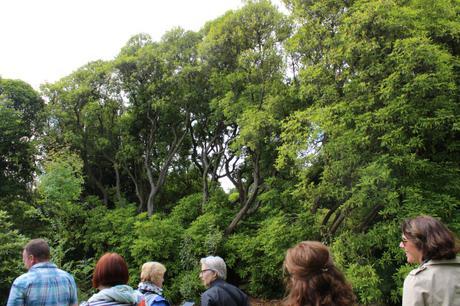
One of the collections Kilmacurragh is known for is its collection of rhododendrons collected by Joseph Hooker. You can see how huge they have grown from the photograph above, I can imagine they are stunning when in flower.
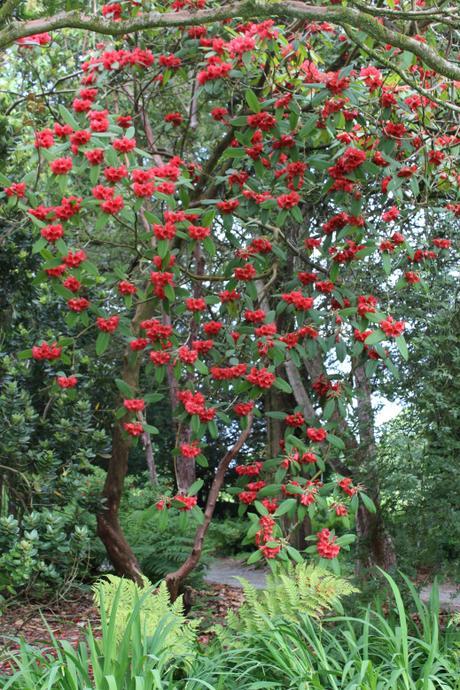
This is one of the last ones to flower. I did right its name down but my phonetic scrawl is illegible but it is some sort of hybrid beginning with g!! Whatever its name, for someone who finds the plant hunter stories fascinating, it was a real thrill to see plants that were actually collected by someone I had read about.

The plants at Kilmacurragh really demonstrate the benefits of Ireland’s damper climate. I was captivated by the light on these ferns until I walked a few steps further and spotted the giant lilies (Cardiocrinum giganteum)
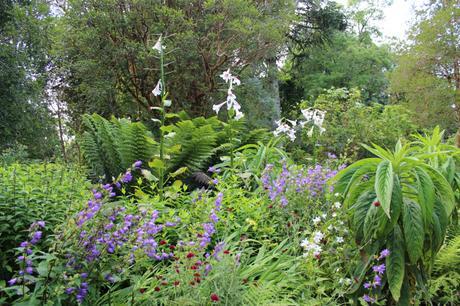
There are several clumps throughout the shady part of the long borders and last year, to mark the centenary of the First World War and the men from the estate who lost their lives in it, they planted enough bulbs to have 100 flowering. I wish I had seen that it must have been breath-taking and heavenly to smell.

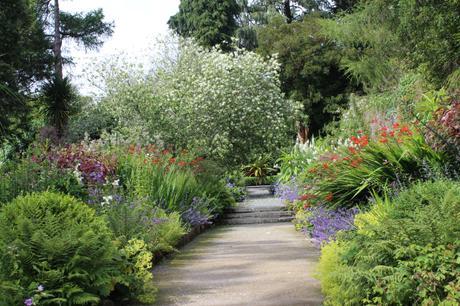
I loved the long herbaceous border. It is a beautiful mixture of foliage and flowers with plants repeated to give rhythm but many of the plants aren’t those you would expect to see in a long border as hidden away are some wonderful meconopsis paniculata poppies, echiums, white willowherb, astibles, geraniums, and various calmagrostis – wonderful.
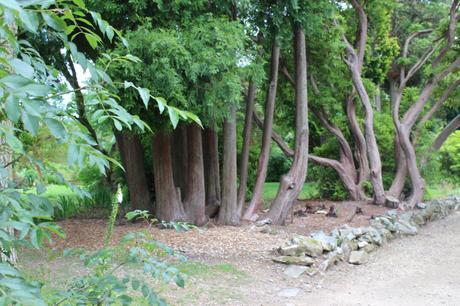
From the long border we headed out into the arboretum again and saw many delights which to be honest I don’t think I appreciated as much as I should have since my tree knowledge is limited. However, I do know the tree above is vast and very old, possibly dating back to the time of Janet Acton, in the 1870s
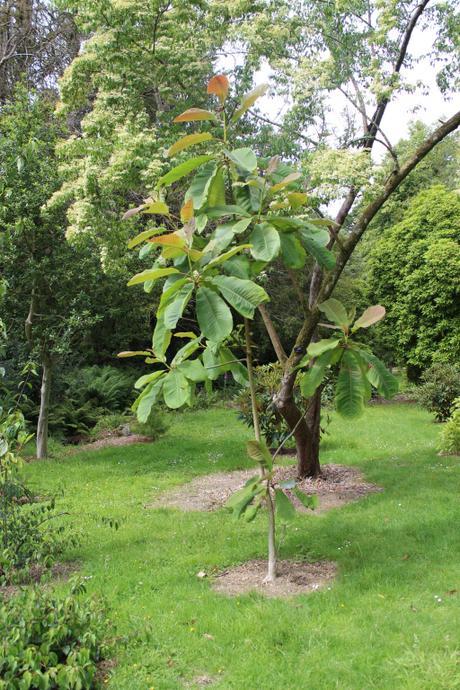
However, I do know that this tree is a Magnolia rostrata and a fairly new addition showing that the collection of plants, particularly trees is continuing. Future plans include the creation of areas specifically for plants of China, Chile and the Himilaya. There are even plants that have been bred in the garden by Seamus and named for it such as the Cornus capitata ‘Kilmacurragh Rose’ which was named recently (below).
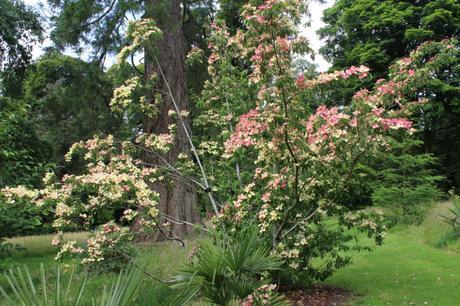
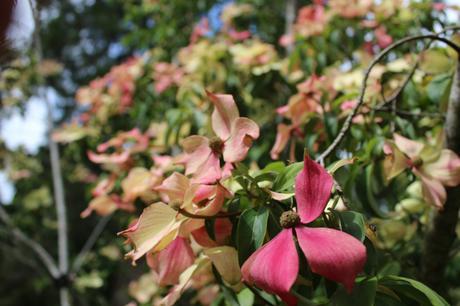
But while you are marvelling at the flowers on this new introduction you are aware that just behind you is the original main road through the area down which Oliver Cromwell’s troops marched in the 17th century bringing with them Thomas Acton. Thomas was given the land, in lieu of pay. His son, Thomas II had the derelict St Mochorog’s Abbey torn down and the stone reused to build the house you see in the top picture in the Queen Anne style.
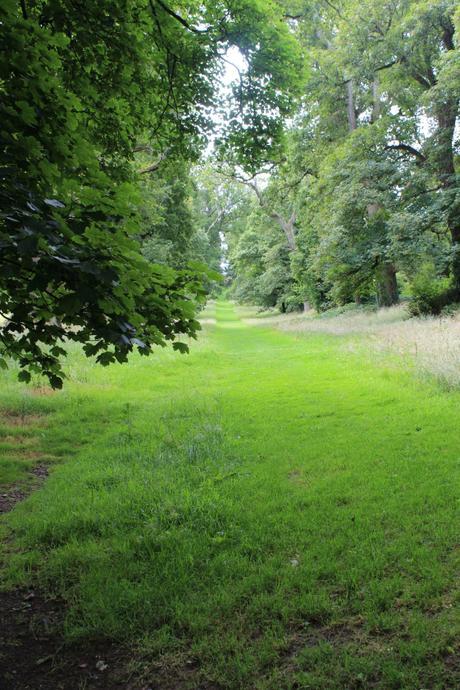
The old road down which Oliver Cromwell marched
We saw how the gardens have been clearing the area of the road and opening up the site with a view to reinstating various historical references around the site.
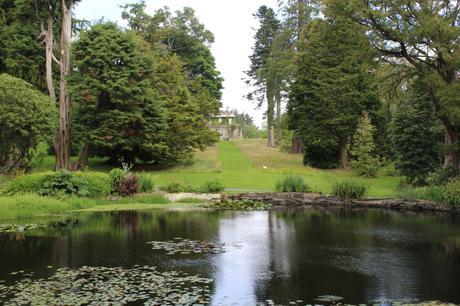
But the history is evidenced even further back as the pond above is the original 7th century fish stew which provided for the monastery, established around a hermitage founded by St Mochorog, of British royal birth.
Given that throughout our trip we received a potted history of Ireland from our tour leader, Noel Kingsbury, this garden managed to encompass Irish history in one site and I haven’t included all the stories about the various uprisings and their impact on the estate. For me, a plant nut and a lover of history with a fascinating for early medieval Irish history, this was a special garden for us to visit.
